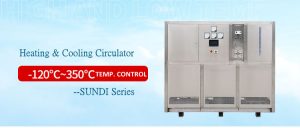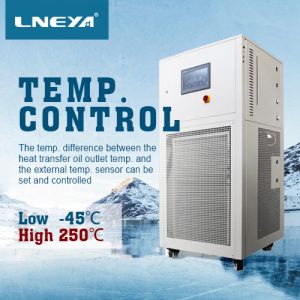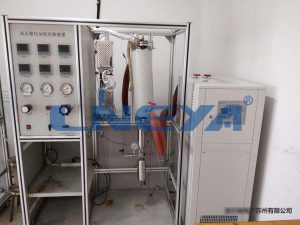New energy vehicle battery motor test motor oil chiller and liquid chiller
In the new energy industry, cooling methods mainly include natural cooling, air cooling, liquid cooling, and oil cooling. The cooling of new energy motors mainly includes oil cooling and liquid cooling. Then, these two cooling methods How are they all? Next, LNEYA a new energy motor oil cooler manufacturer, will give you a detailed introduction:

New energy motor oil cooling and liquid cooling applications:
- The new energy motor oil cooler is mainly used in hybrid vehicles, because hybrid vehicles need to consider the cooling of the internal combustion engine and the motor at the same time, so it is more appropriate to use oil cooling. The cooling method of the new energy motor oil cooler is to pump the oil into the oil pipe through the oil pump. The oil pipe installed inside is perforated, and the oil is sprayed inside the motor to achieve the dual functions of cooling and lubrication.
- New energy liquid coolers are mainly used in pure electric vehicles, because liquid cooling can more effectively remove the heat from the motor and prevent the motor from overheating. The liquid cooling method is basically the same as the liquid cooling method of the engine. The coolant is provided with water channels inside the casing, and the stator is installed in the casing. The coolant does not directly contact the stator, and dissipates heat in the form of heat conduction.
How to choose between oil cooling and liquid cooling for new energy motors:
- As for which is better, oil cooling or liquid cooling, it actually depends on the specific usage scenarios and needs. The cooling effect of the new energy motor oil cooler is slightly worse than that of liquid cooling, but in some special cases, such as high altitude or cold environment, the cooling effect of the new energy motor oil cooler will be more stable. The cooling effect of the new energy liquid cooler is better, but in the environment of large temperature difference, the liquid cooling may produce some condensed water, so it is necessary to pay attention to prevent the motor from getting wet.
- As for whether the pure electric vehicle motor is cooled with oil, this is possible, but relatively rare. Because the motor of a pure electric vehicle is mainly driven by electricity, it is more necessary to consider the efficiency and service life of the motor, and the choice of the cooling method of the new energy motor oil cooler is more determined according to the specific model and usage scenario.
7 * 24 kostenlose Beratung und umfassende Lösungen anbieten


E-Mail: sales@cnzlj.com
WhatsApp: 086 13912479193
Verwandte Empfehlungen
-
The use and characteristics of the SUNDI series of high and low temperature cooling circulators
1216The SUNDI series of high and low temperature cooling circulators are equipment for direct or auxiliary heating in the fields of biology, physics, chemical engineering, medical treatment, environmental protection, etc. Moreover, the temperature con...
Details anzeigen -
Heat transfer oil cleaning instructions in the heat transfer oil secondary circulation system
1061The heat transfer oil secondary circulation system uses the heat transfer oil as the medium to carry out the refrigeration and heating temperature control. Then, when the user cleans the heat transfer oil in the heat transfer oil secondary circula...
Details anzeigen -
The Installation Requirement of the Industrial Chiller
972(1) The chiller power supply adopts three-phase four-wire, power supply line (R, S, T) connected with power supply fire line, (N) zero line, (G) ground line.,
Details anzeigen -
The necessity of temperature heating and cooling cycle in the process of catalytic hydrogenation
1088In recent years, with the rising price of oil, the demand for benzene obtained from coking benzene has increased, coupled with the country's increasing emphasis on environmental protection, the widespread application of coking benzene hydrogenatio...
Details anzeigen
 LNEYA Industriekühler Hersteller Lieferant
LNEYA Industriekühler Hersteller Lieferant














Zur Konsultation einreichen
Wir werden Ihnen innerhalb von 24 Stunden antworten